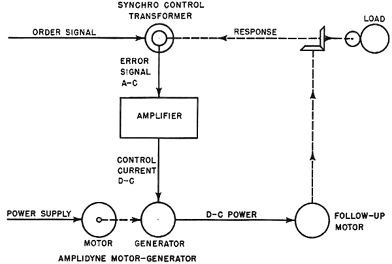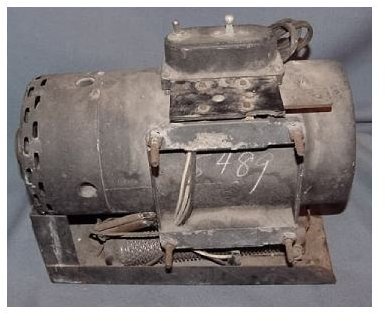The GE Amplidyne 115 to 250 Volt Motor Generator
The Amplidyne Motor Generator is a special purpose motor generator that supplies precisely controlled DC current to large sized DC motors that are used for driving heavy loads like missile launchers and gun turrets.
It is capable of producing a controlled output power in the range of a few hundred to a few thousand watts with amplification of power in the range of 10,000 or more.
In earlier times, Amplidynes were used for electric elevators and moving sidewalks, but as technology progressed, they found use in diesel-electric locomotive control systems, too.
The Initial Replacement for Vacuum Tubes
A few decades back, amplidynes were one of the first few amplifiers to produce an extremely high power in the range of tens of kilowatts, giving way for accurate feedback control of heavy machines.
Reasonably sized vacuum tubes were not able to deliver sufficient power to control large sized motors, but vacuum tube circuits that drove the input of amplidynes could be utilized to enhance small signals higher up to the power required to drive large motors.
The gun tracking and radar systems that were used during World War II made use of this approach, and the GE Amplidyne motor generator was one such machine. Amplidynes had numerous advantages over vacuum tubes, with the biggest one, of course, being the sheer fact that they could produce power gains as high as 1000.
How do they Work?

The basic concept of this motor-generator is that it makes use of regeneration to enhance its gain. Energy is produced by the motor and the output power is managed by altering the field current of the generator. Considering the case of a typical generator, the load brushes are situated perpendicular to the magnetic field flux.
If you want to convert a generator to an amplidyne, you will have to connect what seems to be the load brushes jointly and get the output from another set of load brushes parallel to the field. The brushes that are perpendicular are called the ‘quadrature’ brushes.
Such a simple modification can enhance the gain by 10,000 times or more. In the above case of the GE Amplidyne 115 to 250 Volt Motor Generator, the characteristics of the generator facilitate generating around 87 ampere of armature current at 115 volts at the terminals for output; the values range accordingly for variations up to 250 volts.
This indicates a power output of around 10,000 watts (P= IE), implying a power gain of 100. In short, 100 watts control 10,000 watts of output, and this is how an amplidyne works in simple terms.
However, today MOSFETs can produce even high power gains of as high as 1,000, and IGBT are also capable of achieving power gains in the range of 500-2000, which is why you don’t get to see amplidynes in action anymore.
Historic Applications

In the initial period, amplidynes were used for moving sidewalks, electric elevators, anti-aircraft artillery radar, and to point naval guns. Later on, they were applicable for controlling processes in steelworks. The other important application was to remotely manage the control rods in early nuclear submarine designs. They were also used in diesel electric locomotive control systems.
Most of its applications were in the field of feedback control systems, and it was used primarily as a voltage regulator.
Though the GE Amplidyne 115 to 250 Volt Motor Generator is outdated today, several folks still look out for it today, though it’s quite probable that some of them may be just curious to know about these World War II era machines, despite the fact that there are several modern electronic devices to control power in the kilowatts range.
Basically, during the World War II era, there weren’t too many options on offer, and these machines were in a class of their own. Vacuum tubes could offer higher power levels, but the lack of planned obsolescence was the primary reason behind their lack of evolution.
